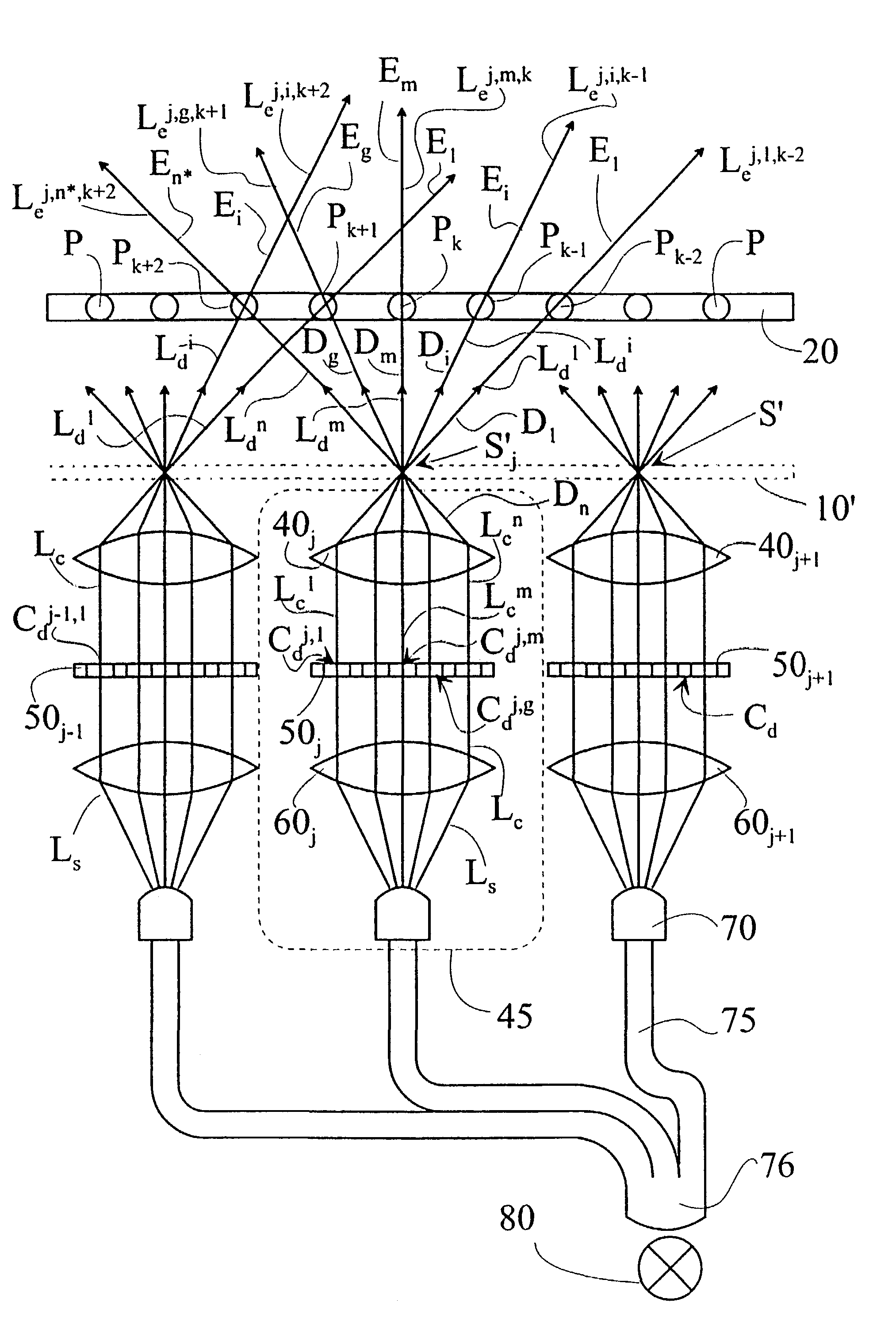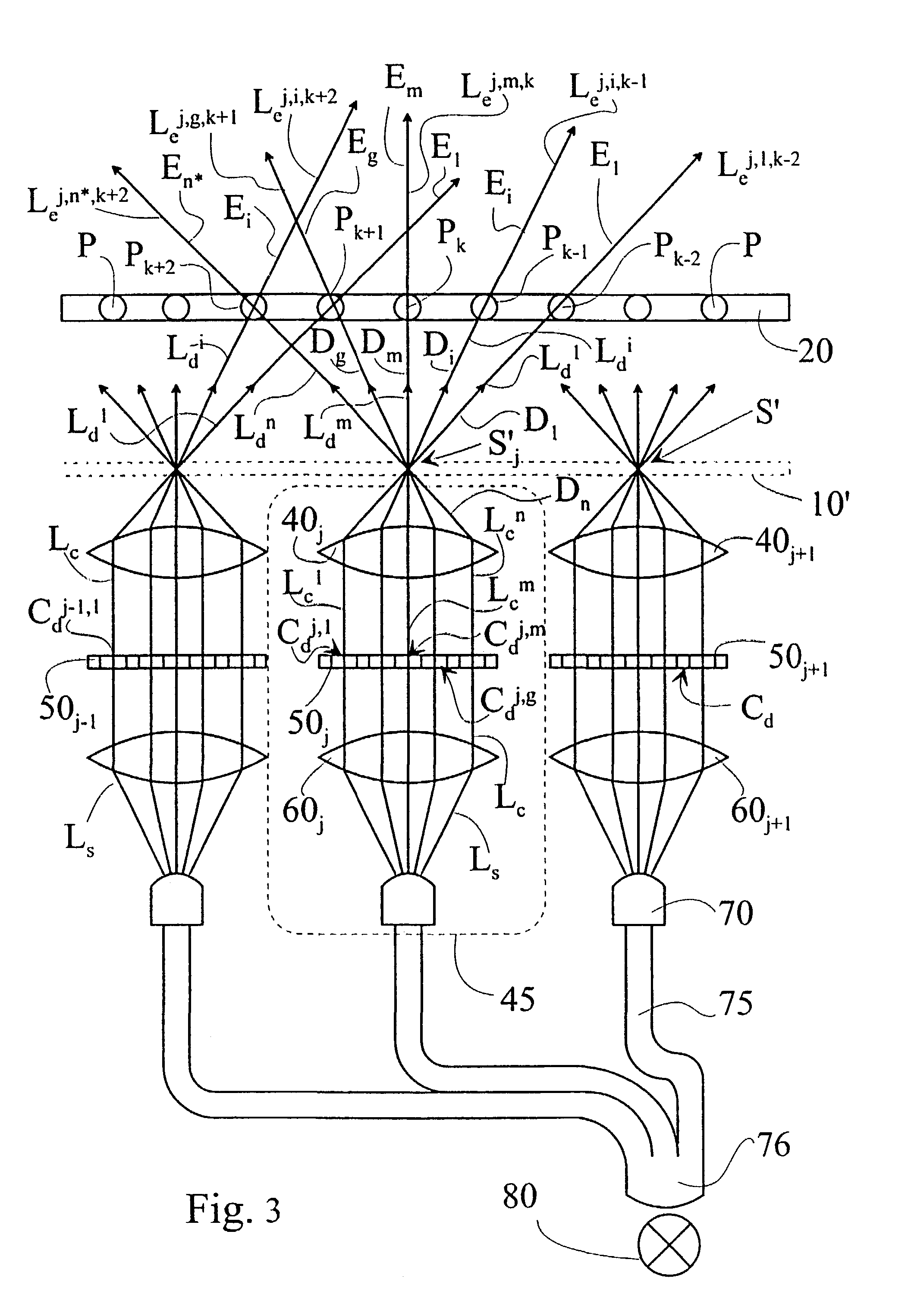Method and apparatus for displaying 3d images
a 3d image and apparatus technology, applied in static indicating devices, instruments, optical elements, etc., can solve the problems of not being able to use devices in practice, requiring more space, etc., to increase the number of emitting directions, reduce costs, and improve resolution
- Summary
- Abstract
- Description
- Claims
- Application Information
AI Technical Summary
Benefits of technology
Problems solved by technology
Method used
Image
Examples
Embodiment Construction
[0076]With reference to FIGS. 1–3 we explain the principle of the invention through presenting the apparatus. The apparatus is to provide three-dimensional images with a sense of space. This is fulfilled by the screen of the apparatus emitting different light beams in different emitting directions as explained in detail in FIG. 6. For that purpose the apparatus has a screen 20 that transmits and / or reflects light direction selectively. By the direction selectivity of the screen we mean that the exiting light beam Lc exits the screen 20 depending of the incident angle of the deflected light beam Ld arriving at the screen 20, i.e. a well defined emitting angle is associated to a given incident angle. In other words, the direction of the incident light beam Ld explicitly determines the direction of the exiting light beam Le, as opposed to diffuse screens, where after the incidence of a light beam other light beams exit in a relatively wide space angle and the direction of the incident ...
PUM
 Login to View More
Login to View More Abstract
Description
Claims
Application Information
 Login to View More
Login to View More - R&D
- Intellectual Property
- Life Sciences
- Materials
- Tech Scout
- Unparalleled Data Quality
- Higher Quality Content
- 60% Fewer Hallucinations
Browse by: Latest US Patents, China's latest patents, Technical Efficacy Thesaurus, Application Domain, Technology Topic, Popular Technical Reports.
© 2025 PatSnap. All rights reserved.Legal|Privacy policy|Modern Slavery Act Transparency Statement|Sitemap|About US| Contact US: help@patsnap.com



